
Orsay Museum vs Louvre Museum: The Ultimate Paris Art Showdown
Trying to pick between the Musée d’Orsay and the Louvre? That’s like deciding between two parallel universes of art. One pulls you into grand halls echoing with centuries of stories; the other surrounds you with light, color, and the restless energy of Paris in the late 1800s.
If you want ancient treasures and world-famous icons, go for the Louvre — if you prefer Impressionist beauty and a calmer visit, choose the Orsay.
Both sit just across the Seine from each other, so distance isn’t the issue here. It’s all about what kind of day you want to have.
I’ve wandered through both more times than I can count. Every visit feels different, honestly.
The trick is matching your pick to your mood, your time, and how much art you can handle before your feet start to rebel.
Table of Contents
- Key Takeaways
- Key Differences Between Orsay Museum and Louvre Museum
- Artistic Focus and Time Periods
- Museum Size and Layout
- Visitor Experience and Atmosphere
- Iconic Masterpieces and Must-See Artworks
- Louvre Museum Highlights
- Musée d’Orsay Highlights
- Notable Artists and Their Works
- Architectural Beauty and Historical Significance
- The Louvre’s Evolution: Fortress to World-Famous Museum
- Orsay’s Transformation: 19th-Century Train Station to Art Haven
- Iconic Features: Glass Pyramid and Station Clock
- Visitor Experience: Crowds, Accessibility, and Atmosphere
- Crowd Levels and Best Times to Visit
- Navigation and Accessibility
- Family-Friendly Considerations
- Tickets, Passes, and Practical Tips
- Ticket Options and Pricing
- Paris Museum Pass and Combo Deals
- Guided Tours and Skip-the-Line Strategies
- Dining, Amenities, and Nearby Attractions
- On-Site Cafés and Restaurants
- Nearby Landmarks and Activities
- Planning Your Museum Day in Paris
- Frequently Asked Questions
- What distinguishes the art collections of the Orsay Museum from those at the Louvre?
- Can you highlight the key historical periods covered by the Orsay Museum compared to the Louvre?
- What are the architectural differences and historical significance between the Orsay Museum and the Louvre?
- How should a visitor allocate time between the Orsay Museum and the Louvre for a balanced art experience?
- Could you suggest which museum, Orsay or Louvre, is better suited for admirers of Impressionist paintings?
- What unique experiences can visitors expect at the Orsay Museum that differ from the Louvre’s offerings?
- Book Your Dream Experience
- More Travel Guides
Key Takeaways
- The Louvre offers vast history and iconic works in a massive space
- Musée d’Orsay focuses on Impressionist art in a more relaxed setting
- You can visit both in one trip if you plan well
Key Differences Between Orsay Museum and Louvre Museum
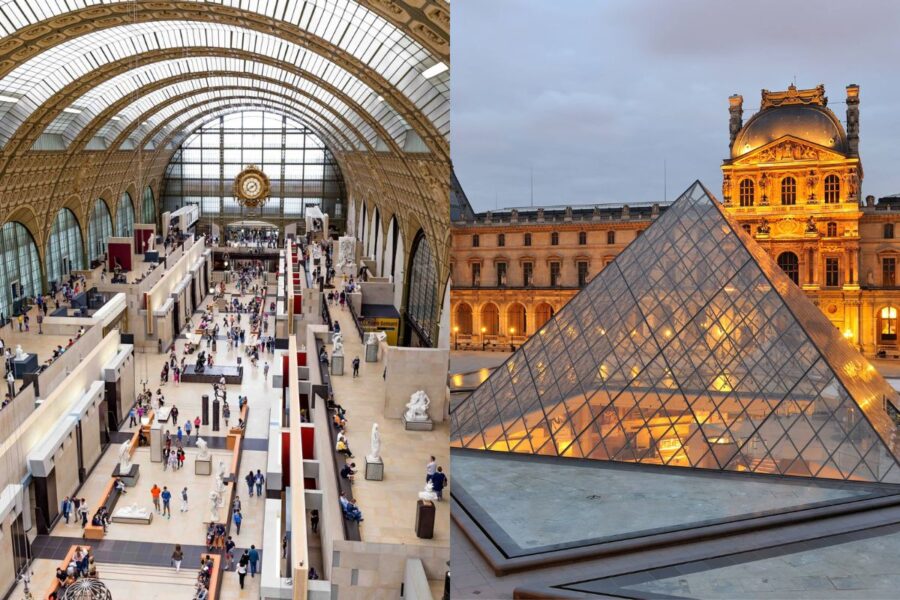
The Louvre sprawls across thousands of years of art in a palace that could swallow a city block. The Orsay? It zooms in on a few revolutionary decades, all inside a once-grand train station.
One can eat up your whole day, easy. The other feels like a focused, half-day adventure.
Crowds, layout, and even the mood inside—these aren’t subtle differences.
Artistic Focus and Time Periods
If you’re nuts about Impressionist and Post‑Impressionist art, the Orsay is basically your dream come true. Monet’s water lilies, Van Gogh’s Starry Night Over the Rhône, Degas’ dancers—it’s a greatest-hits playlist from 1848 to 1914, jam-packed with big names.
The Louvre, though, is the world’s most ambitious art sampler. You’ll get Renaissance paintings by Leonardo da Vinci, ancient Egyptian statues, Greek and Roman icons like the Venus de Milo, and even Islamic art. It’s a wild ride from Mesopotamia to the 19th century.
Ask yourself—do you want a buffet of centuries, or a deep dive into one electric era?
Museum Size and Layout
The Louvre is gigantic—over 780,000 square feet of galleries. You could walk all day and still miss whole wings.
It’s split into wings and floors, and honestly, it’s easy to get turned around. Bring a map, and a plan, or you’ll end up lost in some medieval dungeon (it’s happened to me).
The Orsay feels manageable. Its train station bones mean wide, open halls and side galleries you can actually keep track of.
You can see most of it in three or four hours, and you won’t feel like you’re running a marathon.
Some folks love the Louvre’s endlessness. Others, not so much. The Orsay’s smaller footprint just feels friendlier, especially if you’re not up for a day-long trek.
Visitor Experience and Atmosphere
The Louvre draws crowds like nowhere else. Around the Mona Lisa, it’s always a crush—unless you’re there at sunrise or something.
Lines can snake out the door if you don’t book ahead. The energy inside? Sometimes it’s electric, sometimes it’s just chaos.
The Orsay is calmer. Sure, it gets busy, but you can usually get close to the art without elbowing through a mob.
The big glass ceilings and that old station clock make everything feel lighter, airier. It’s a totally different vibe.
If you like the buzz and the crowds, the Louvre’s your spot. But if you want to actually linger in front of a painting, the Orsay’s got your back.
Iconic Masterpieces and Must-See Artworks
Both museums are treasure chests, but what’s inside each is a totally different haul.
One leans toward centuries-old icons that shaped art history. The other immerses you in the light, color, and emotion of the Impressionist and Post‑Impressionist eras.
Knowing the highlights helps you plan your time so you don’t miss the works that matter most.
Louvre Museum Highlights
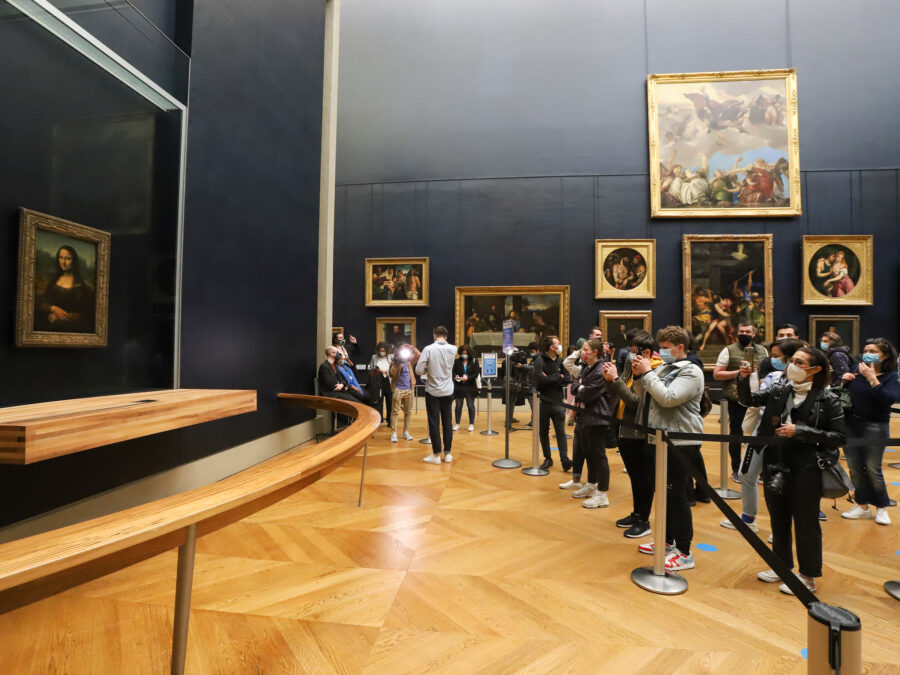
The Louvre houses some of the most recognized art on the planet. The Mona Lisa by Leonardo da Vinci is the big draw—smaller than you’d think, but the crowd says it all.
You’ll also spot the Venus de Milo, a knockout Greek sculpture, and the Winged Victory of Samothrace, perched at the top of a staircase like it owns the place.
If you’re into grand scenes, Liberty Leading the People by Delacroix channels the 1830 revolution, while Jacques‑Louis David’s Coronation of Napoleon just overwhelms with imperial drama.
Honestly, the Louvre is so huge that picking a theme—like Renaissance paintings or French Neoclassicism—can save your sanity.
Musée d’Orsay Highlights
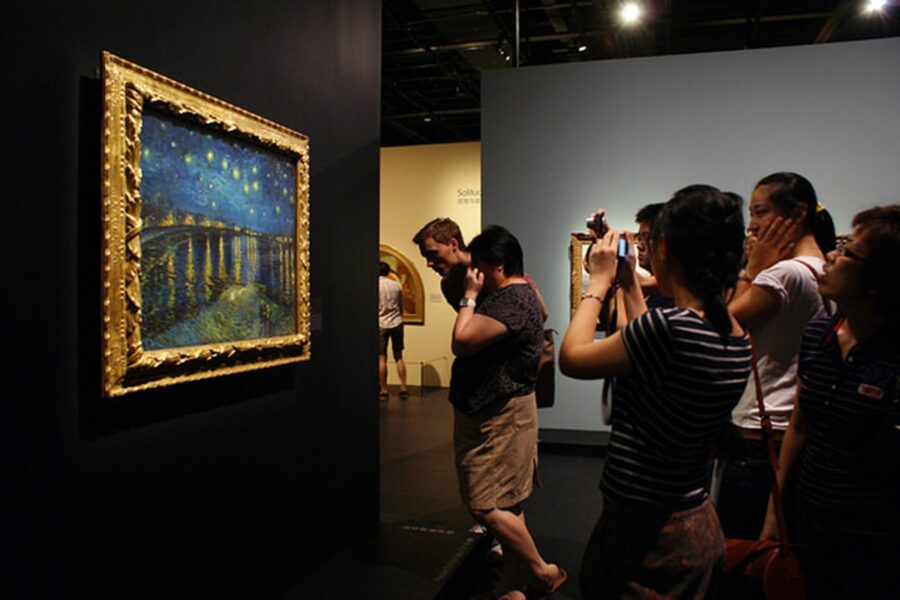
The Orsay feels more intimate, and that’s a big part of its magic. It’s packed with Impressionist masterpieces—the kind of paintings where you can see the brushstrokes up close.
Claude Monet’s Water Lilies series is a breath of fresh air in the middle of the museum. Renoir’s Dance at Le Moulin de la Galette drops you right into a lively Paris scene.
Van Gogh’s Starry Night Over the Rhône glows with deep blues and golds. Manet’s Olympia and Degas’ The Absinthe Drinker still spark debates, even now.
You can slow down here—no need to rush through endless corridors. It’s a museum that invites you to take your time.
Notable Artists and Their Works
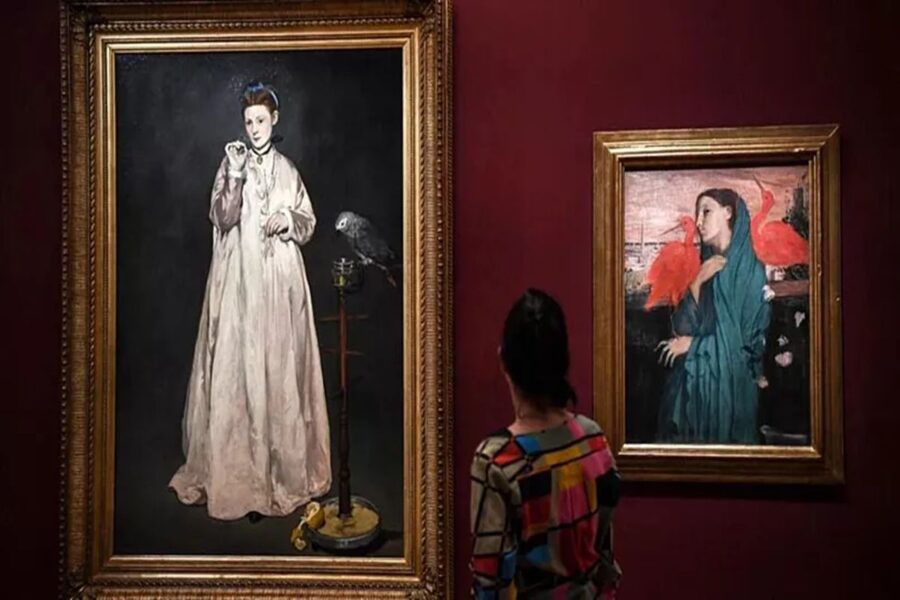
Some artists show up in both museums, but their work feels different depending on the setting.
At the Louvre, you’ll find Leonardo da Vinci’s precise detail, Michelangelo’s sculptural genius, and the epic canvases of David and Delacroix.
At Orsay, it’s all about the birth of modern art: Monet’s shifting light, Cézanne’s structured brushwork, Van Gogh’s swirling skies, Renoir’s warm social scenes.
Rodin’s sculptures add a tactile punch to the galleries.
If you love Édouard Manet, Orsay is where his boldest works hang alongside his peers. For Paul Cézanne, whose style bridged Impressionism and Cubism, the Orsay collection lets you see that evolution up close.
Architectural Beauty and Historical Significance
Paris has this knack for turning even its most practical buildings into works of art.
One started as a medieval fortress, now the world’s most visited museum. The other began as a grand 19th‑century train station, now home to the largest Impressionist collection anywhere.
Both places wear their history right on their sleeves.
The Louvre’s Evolution: Fortress to World-Famous Museum
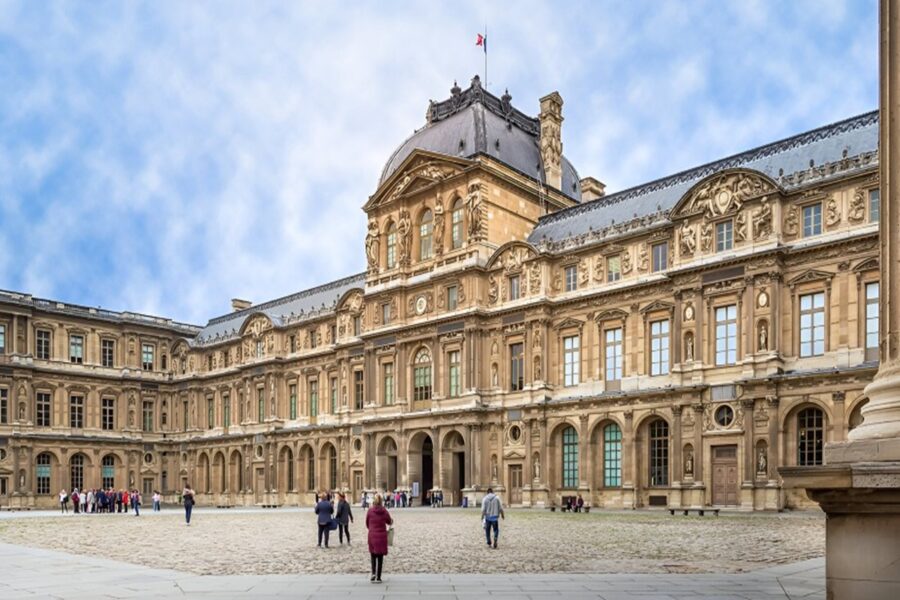
When you walk into the Louvre, you’re literally stepping onto ground fortified over 800 years ago. It started in 1202 as part of Paris’s defenses, with a moat and thick stone walls.
You can still see some of those medieval bones in the lower level—it’s worth a look if you’re into ancient stonework.
French kings kept expanding and reshaping the place into a royal palace. Renaissance façades, ornate courtyards, that lavish Apollo Gallery—they all come from this era.
Each monarch left a mark. It’s like walking through a living history book, page by page.
It became a public museum in 1793, after the royal court moved out to Versailles. Now, the Louvre is more of a timeline in stone than a single style.
Orsay’s Transformation: 19th-Century Train Station to Art Haven
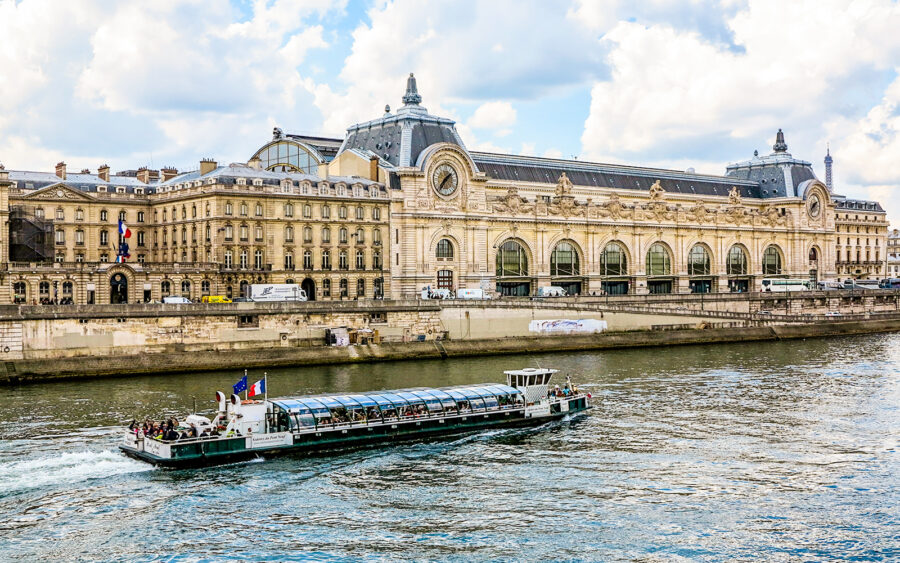
The Musée d’Orsay started as the Gare d’Orsay, built for the 1900 Universal Exhibition. They wanted to impress travelers arriving by train from the southwest.
Iron framework, glass roof, a soaring central hall—it was cutting-edge at the time.
By the 1970s, the station had outlived its use for long-distance trains. Instead of tearing it down, the city decided to turn it into a museum for 19th‑ and early 20th‑century art.
That move saved one of Paris’s prettiest Belle Époque landmarks.
These days, the building feels like part of the collection. The wide, open nave lets you breathe, and the natural light from the roof softens everything.
Iconic Features: Glass Pyramid and Station Clock
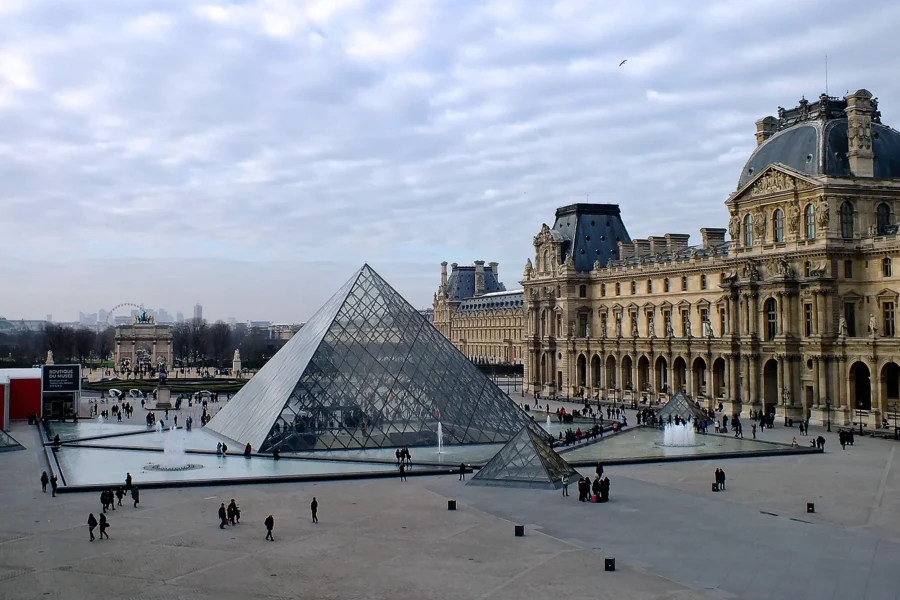
The Louvre’s most famous modern twist? The glass pyramid by I.M. Pei, unveiled in 1989.
It’s the main entrance now, and it slices right through the old stone. At first, Parisians weren’t thrilled, but now it’s as much a photo op as the Mona Lisa.
At the d’Orsay, the showstopper is the giant station clock. Stand behind it, look out over the Seine, and you’ll see the city framed by the clock’s hands.
It’s one of those little moments that sticks with you—part architecture, part postcard.
Both features tell you exactly where you are before you even see the art. The pyramid says “you’re entering the Louvre.” The clock says “you’re in a train station turned gallery.” That’s Paris for you—the buildings themselves are half the fun.
Visitor Experience: Crowds, Accessibility, and Atmosphere
A day at the Louvre or the Musée d’Orsay can feel wildly different depending on when you go, how you get around, and who you’re with.
Each museum has its own rhythm, layout, and vibe. Sometimes that makes all the difference.
Crowd Levels and Best Times to Visit
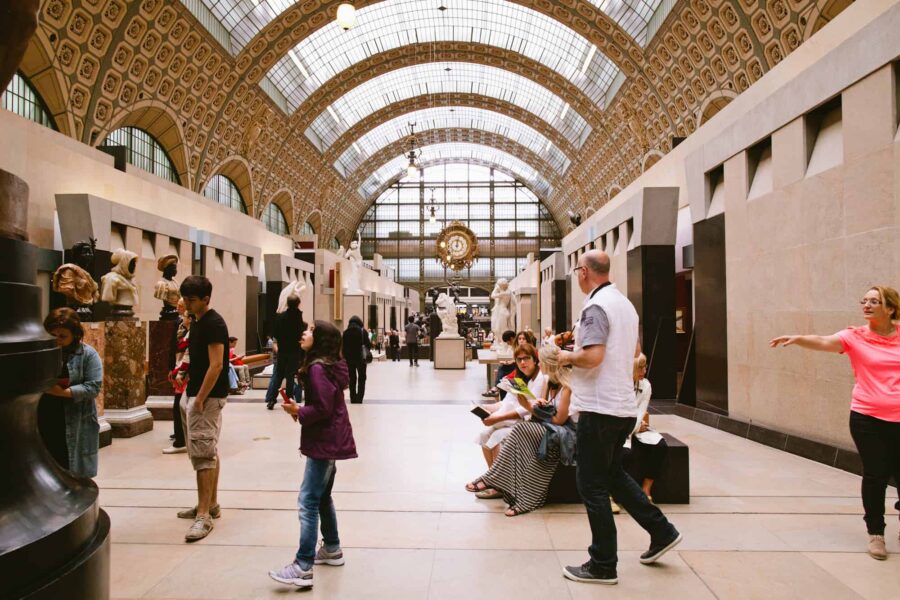
The Louvre is almost always packed. The biggest crush is around the Mona Lisa and Venus de Milo—sometimes it feels like everyone in Paris is in the same room.
Weekday mornings or late evenings are your best shot at a little breathing room, especially if you dodge the peak tourist months.
The Orsay gets its share of visitors, but its smaller size and open layout mean you can usually get close to the art without jostling a crowd.
Early mornings work best here too, especially if you want a quiet moment with Monet or Van Gogh.
Skip-the-line tickets or a Paris Museum Pass can save you a ton of time. I’ve learned (the hard way) that showing up in July without a plan is just asking for trouble.
If you’re short on time, book ahead. Trust me, you’ll thank yourself.
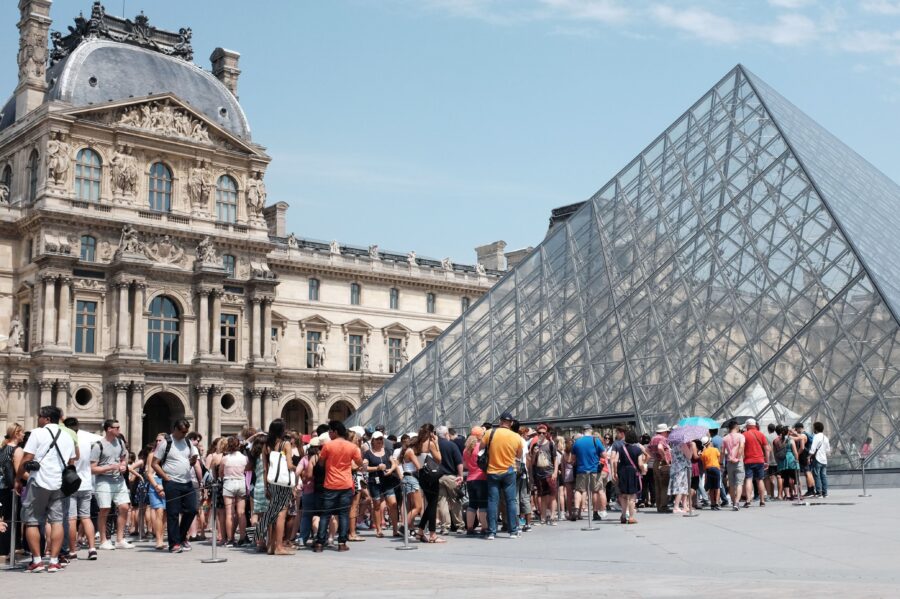
The Louvre is a maze, no way around it. Even with maps, it’s easy to get turned around, and you’ll walk way more than you think.
There are elevators and ramps, but sometimes you’ve got to detour to find them. If mobility’s a concern, plan your route and give yourself extra time.
The Orsay is so much easier to navigate. It’s basically one big hall with side galleries—no endless corridors or hidden staircases.
The old train station design keeps everything open and bright. If you hate feeling boxed in, you’ll appreciate it.
Both museums offer wheelchair rentals, accessible restrooms, and helpful staff. If you’re using the Paris Pass, you can bundle your visit with nearby attractions and skip extra ticket lines.
Family-Friendly Considerations
If you’re visiting with kids, the Musée d’Orsay is usually the better starting point. You can see the highlights in a couple of hours.
The big station clock windows are a fun photo spot. There’s less pressure to “see it all,” which keeps the mood lighter.
The Louvre can be exciting for older children who enjoy history or mythology, but it’s a marathon. Break it up with snack stops in the cafés.
Don’t try to cover more than a few sections. The Egyptian wing is often a hit with younger visitors.
Both museums let children under 18 in for free, which is a nice bonus. If you plan your day well, you can mix a museum visit with other things to do in Paris.
Maybe hop on a boat ride on the Seine or sprawl out for a picnic in the Tuileries Garden. That usually keeps everyone happy.
Tickets, Passes, and Practical Tips
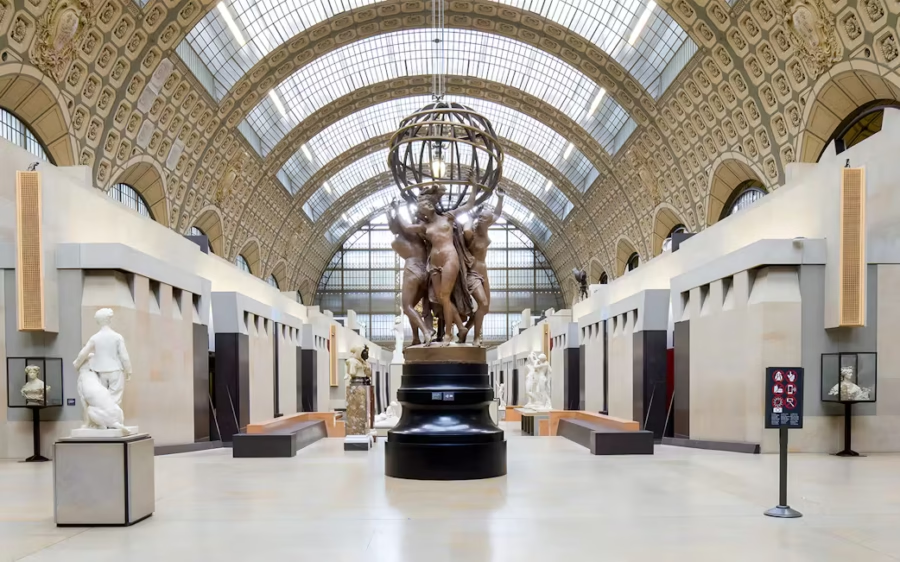
A bit of prep goes a long way if you want to visit both the Louvre and Musée d’Orsay. Ticket choices, pass options, and a little booking strategy can save you time and spare you from endless lines.
Ticket Options and Pricing
Standard adult tickets for the Louvre are about €17. Musée d’Orsay tickets run about the same.
Both museums let anyone under 18 in for free, and EU residents under 26 get free entry with a valid ID. That’s a solid deal if you qualify.
Buy tickets online in advance to dodge the ticket counter chaos. Both museums use timed-entry slots now, so you’ll have to pick a specific arrival window.
If you’re visiting on the first Sunday of the month, entry is free for both museums. But brace yourself for crowds—I’ve done it, and you’ll be shoulder-to-shoulder in the Mona Lisa room.
For convenience, you can book museum tickets with mobile entry. Just scan your phone at the entrance—no paper, no fuss.
Paris Museum Pass and Combo Deals
If you’re spending a few days in Paris and plan to hit multiple museums, the Paris Museum Pass can be a smart buy. It covers both the Louvre and Musée d’Orsay, plus dozens of other sites like the Arc de Triomphe and Centre Pompidou.
You can buy the pass for 2, 4, or 6 consecutive days. The more places you visit, the more value you squeeze out of it—but only if you’re doing at least 2–3 paid attractions per day.
Some combo tickets bundle both museums into one purchase. A few even toss in river cruises or walking tours, which takes the guesswork out of planning.
If you’re short on time, look for deals that include both museums in a half-day or full-day guided itinerary. I tried one of these once, and it was surprisingly efficient—no getting lost, just the highlights.
Guided Tours and Skip-the-Line Strategies
Skip-the-line tickets are a lifesaver if you hate waiting, especially at the Louvre where security and entry lines can eat up an hour or more. Musée d’Orsay lines are shorter, but still get crazy in peak season.
Guided tours often include priority access, so you walk right in. You can also book tours and activities that focus on highlights—ideal if you don’t have the stamina for a full-day wander.
At the Louvre, try entering via the Carrousel du Louvre instead of the glass pyramid. It’s usually faster.
For Musée d’Orsay, early morning or late afternoon visits are the calmest. If you’re hitting both in one day, start with the Louvre when your energy’s high, then drift over to the Orsay for a more relaxed afternoon.
Just remember to factor in walking time along the Seine between the two. Paris loves to stretch your legs.
Dining, Amenities, and Nearby Attractions
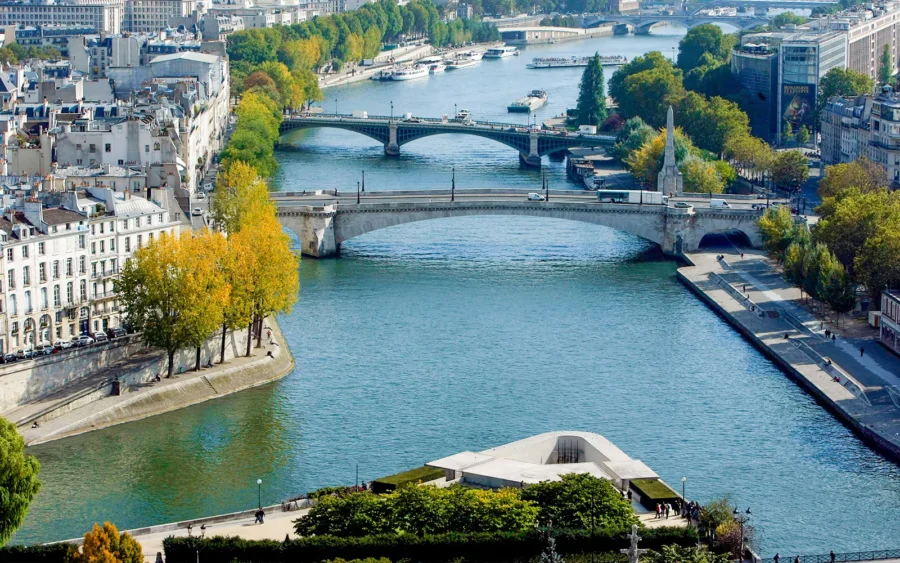
Both the Louvre and the Musée d’Orsay offer more than just art. You can grab a proper meal without leaving the building.
Take in views of the Seine River, then step outside and you’ll find some of Paris’s most famous landmarks within walking distance. With a little planning, you can make a museum visit part of a full day in the city.
On-Site Cafés and Restaurants
At the Musée d’Orsay, the Restaurant du Musée d’Orsay is worth a peek even if you’re not hungry. The grand dining hall has chandeliers, gilded ceilings, and big windows over the Seine.
The menu’s French classic—onion soup, duck pâté, seasonal fish. For something quicker, Café Campana on the fifth floor serves salads, quiches, and desserts like île flottante.
You’ll also get a close-up of the museum’s famous clock face. Over at the Louvre, Café Richelieu sits above the Cour Napoléon with outdoor seating in good weather.
Angelina runs it—yes, you can get their famous hot chocolate. There are also smaller cafés and snack counters scattered through the museum if you just need a coffee between galleries.
Nearby Landmarks and Activities
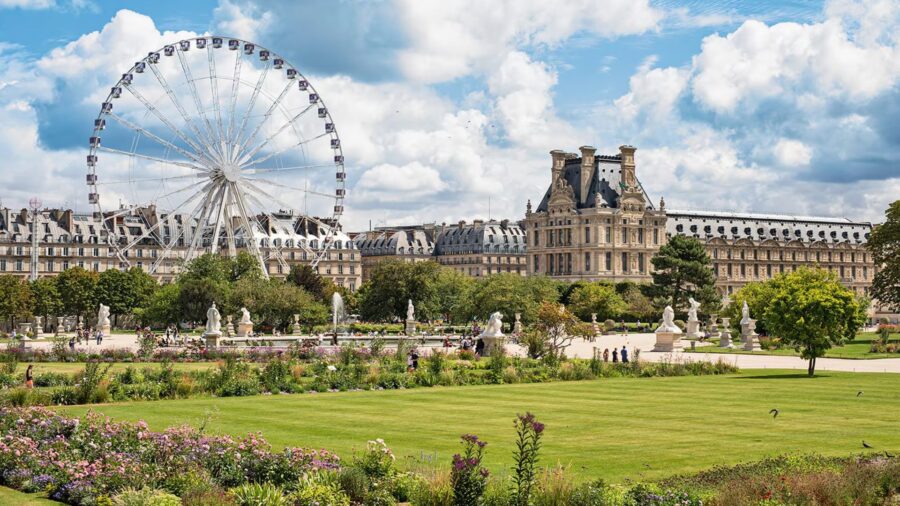
Step outside the Musée d’Orsay, and you’re a short walk from the Musée de l’Orangerie, home to Monet’s Water Lilies. Cross the pedestrian bridge and you’ll find the Jardins des Tuileries.
You can sit at an outdoor café like Terrasse de Pomone. From the Louvre, stroll along the Seine toward the Eiffel Tower or jump on a Seine River cruise for a fresh perspective.
If you’ve got the time and energy, wandering up to Montmartre gives you a change of pace and a neighborhood feel. Both museums are well-placed for exploring on foot.
Comfortable shoes are a must. You’ll cover more ground than you think.
Planning Your Museum Day in Paris

If you’re visiting in peak season, book timed-entry tickets in advance and try for morning or late afternoon to dodge the biggest crowds. Late-night openings—Thursday for the Musée d’Orsay—are quieter and give you a shot at dinner after.
Think about pairing your museum visit with another activity nearby. You could start at the Louvre, have lunch by the river, then walk to the Orangerie.
Or, if you’re staying near the Eiffel Tower, work your way along the Seine toward the Orsay. Don’t forget the practical stuff—carry a small bag, a refillable water bottle, and any travel gear you need for a long day.
Paris is best when you can move at your own pace without sweating the logistics.
Frequently Asked Questions
The Orsay Museum and the Louvre offer very different ways to experience art in Paris. One focuses on a specific era and style, while the other spans centuries and civilizations.
Their buildings, layouts, and even the pace of a visit can feel worlds apart. It’s honestly a bit wild how different the energy is between them.
What distinguishes the art collections of the Orsay Museum from those at the Louvre?
If you’re into Impressionism and Post‑Impressionism, the Orsay is your playground. You’ll find Monet, Van Gogh, Degas, and Renoir in airy, well‑lit galleries that make the colors pop.
The Louvre casts a much wider net. Here you’ll move from ancient Egyptian relics to Renaissance icons like the Mona Lisa, then on to 19th‑century French paintings.
It’s less about one style, more about the full sweep of art history.
Can you highlight the key historical periods covered by the Orsay Museum compared to the Louvre?
The Orsay’s timeline is tight—roughly 1848 to 1914. That’s the sweet spot for Romanticism, Realism, Impressionism, and early Modernism.
The Louvre covers thousands of years. You can start in Mesopotamia, wander through Greek and Roman sculpture, and end up in 18th‑century French salons.
It’s like a crash course in human creativity from prehistory to the 19th century. You really get a sense of time travel.
What are the architectural differences and historical significance between the Orsay Museum and the Louvre?
The Orsay sits inside a former Beaux‑Arts train station. You can still see its giant clock and steel‑framed glass roof.
It feels open, almost like a grand hall instead of a maze of rooms. The Louvre began as a medieval fortress in the 12th century, then became a royal palace.
Its mix of Renaissance wings, classical façades, and the modern glass pyramid makes it a patchwork of eras in one massive complex.
How should a visitor allocate time between the Orsay Museum and the Louvre for a balanced art experience?
If you’ve only got a day, I’d say half a day at each works well. Start at the Louvre in the morning when your energy (and patience) is high.
Head to the Orsay after lunch for a calmer pace. If you’re short on time, the Orsay can be done in 2–3 hours without rushing.
The Louvre? You’ll want at least 4–5 hours, and even then you’re barely scratching the surface.
Could you suggest which museum, Orsay or Louvre, is better suited for admirers of Impressionist paintings?
No contest—go to the Orsay. This is where you’ll see entire walls of Monet’s water lilies, Van Gogh’s swirling skies, and Renoir’s soft portraits.
The Louvre has a few works from the same era, but Impressionism isn’t its focus. You’d be walking a lot of galleries to find a handful of pieces.
What unique experiences can visitors expect at the Orsay Museum that differ from the Louvre’s offerings?
At the Orsay, you can stand behind that giant clock face and look out over the Seine. Honestly, it’s one of the best photo spots in Paris—no contest.
The building itself feels like part of the art. There’s this old-world charm that just wraps around you.
You can actually slow down here. No massive crowds shoving you along, so you might actually remember what you saw when you leave.